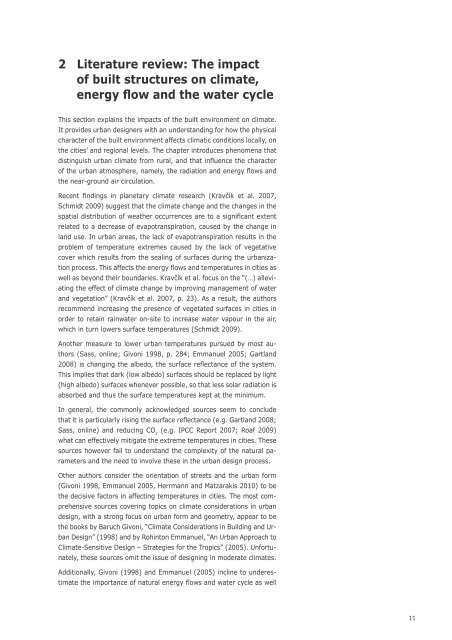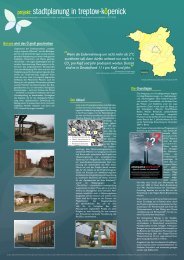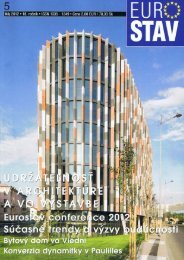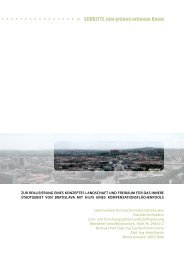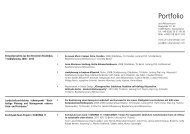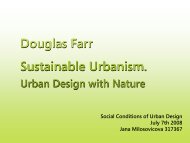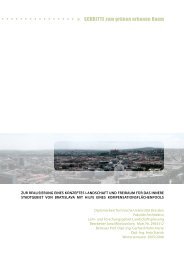Thesis document - Jana Milosovicova - Urban Design English
Thesis document - Jana Milosovicova - Urban Design English
Thesis document - Jana Milosovicova - Urban Design English
- No tags were found...
You also want an ePaper? Increase the reach of your titles
YUMPU automatically turns print PDFs into web optimized ePapers that Google loves.
2 Literature review: The impactof built structures on climate,energy flow and the water cycleThis section explains the impacts of the built environment on climate.It provides urban designers with an understanding for how the physicalcharacter of the built environment affects climatic conditions locally, onthe cities’ and regional levels. The chapter introduces phenomena thatdistinguish urban climate from rural, and that influence the characterof the urban atmosphere, namely, the radiation and energy flows andthe near-ground air circulation.Recent findings in planetary climate research (Kravčík et al. 2007,Schmidt 2009) suggest that the climate change and the changes in thespatial distribution of weather occurrences are to a significant extentrelated to a decrease of evapotranspiration, caused by the change inland use. In urban areas, the lack of evapotranspiration results in theproblem of temperature extremes caused by the lack of vegetativecover which results from the sealing of surfaces during the urbanizationprocess. This affects the energy flows and temperatures in cities aswell as beyond their boundaries. Kravčík et al. focus on the “(…) alleviatingthe effect of climate change by improving management of waterand vegetation” (Kravčík et al. 2007, p. 23). As a result, the authorsrecommend increasing the presence of vegetated surfaces in cities inorder to retain rainwater on-site to increase water vapour in the air,which in turn lowers surface temperatures (Schmidt 2009).Another measure to lower urban temperatures pursued by most authors(Sass, online; Givoni 1998, p. 284; Emmanuel 2005; Gartland2008) is changing the albedo, the surface reflectance of the system.This implies that dark (low albedo) surfaces should be replaced by light(high albedo) surfaces whenever possible, so that less solar radiation isabsorbed and thus the surface temperatures kept at the minimum.In general, the commonly acknowledged sources seem to concludethat it is particularly rising the surface reflectance (e.g. Gartland 2008;Sass, online) and reducing CO 2(e.g. IPCC Report 2007; Roaf 2009)what can effectively mitigate the extreme temperatures in cities. Thesesources however fail to understand the complexity of the natural parametersand the need to involve these in the urban design process.Other authors consider the orientation of streets and the urban form(Givoni 1998, Emmanuel 2005, Herrmann and Matzarakis 2010) to bethe decisive factors in affecting temperatures in cities. The most comprehensivesources covering topics on climate considerations in urbandesign, with a strong focus on urban form and geometry, appear to bethe books by Baruch Givoni, “Climate Considerations in Building and <strong>Urban</strong><strong>Design</strong>” (1998) and by Rohinton Emmanuel, “An <strong>Urban</strong> Approach toClimate-Sensitive <strong>Design</strong> – Strategies for the Tropics” (2005). Unfortunately,these sources omit the issue of designing in moderate climates.Additionally, Givoni (1998) and Emmanuel (2005) incline to underestimatethe importance of natural energy flows and water cycle as well11


